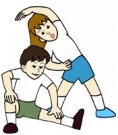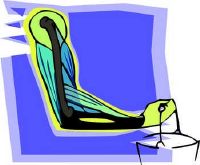
Worksheets and No Prep Teaching Resources
Reading Comprehension Worksheets
Muscular System

Muscular System
 Worksheets and No Prep Teaching Resources Reading Comprehension Worksheets Muscular System |
 Muscular System |
| edHelper's suggested reading level: | grades 5 to 7 | |
| Flesch-Kincaid grade level: | 6.02 |
|
Shapes and Sizes of Muscles
By Jennifer Kenny |

|
 1 Do you remember playing when you were a young child? Did you like to group things like rocks by their shapes or colors? Did you put your toys away based on what they were - dolls, cars, or blocks? Did you group your baseball cards by teams? If you did, in a very simple way you were classifying things. This is very subjective, meaning, it is based on a system by the way you like to group them. Scientists and physicians do the same thing with muscles.
1 Do you remember playing when you were a young child? Did you like to group things like rocks by their shapes or colors? Did you put your toys away based on what they were - dolls, cars, or blocks? Did you group your baseball cards by teams? If you did, in a very simple way you were classifying things. This is very subjective, meaning, it is based on a system by the way you like to group them. Scientists and physicians do the same thing with muscles. |
Create Weekly Reading Books
Prepare for an entire week at once! |
| Leave your feedback on Shapes and Sizes of Muscles (use this link if you found an error in the story) |
 |
Muscular System
|